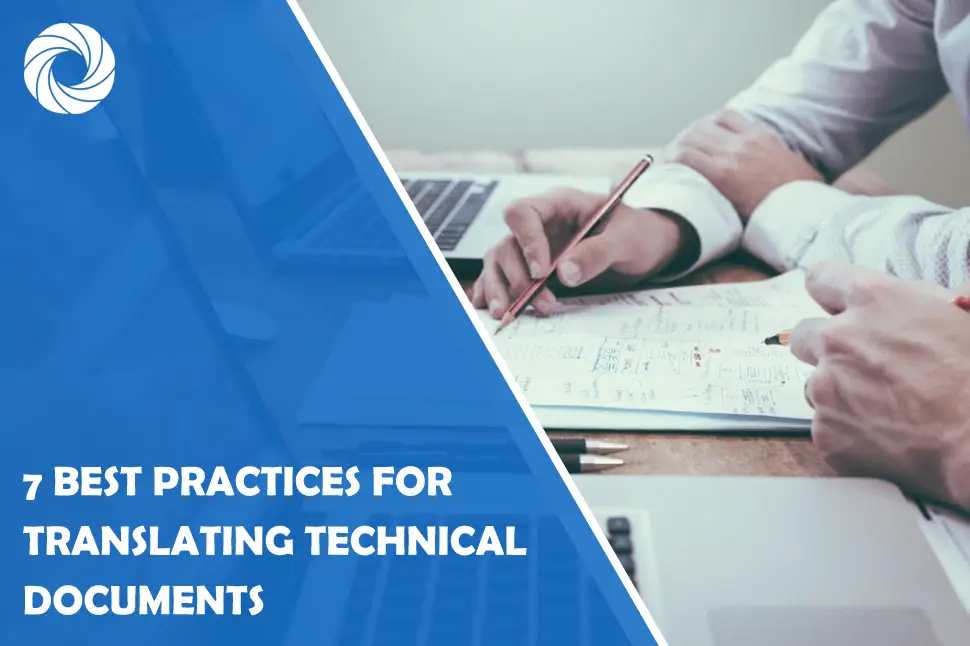In global business, science, and technology, the translation of technical documents plays a crucial role. It bridges communication gaps and enables the exchange of knowledge across languages.
However, translating technical content poses significant challenges, including the use of specific terminology, the need for precision, and ensuring the target audience's understanding. This article lists seven best practices that have helped businesses master the process of translating technical documents.
Glossary and Terminology Management
To ensure consistency and accuracy in technical translation, it is necessary to develop a comprehensive glossary of terms at the beginning. This glossary becomes a critical reference that helps maintain uniformity across the document, especially when dealing with specialized or complex terminology.
Consistency in terminology ensures the document's integrity and clarity for the reader. This step requires close collaboration between translators, technical experts, and the document's authors to capture every nuance of the subject matter. By solidifying this foundation, translators can navigate the complexities of technical documents with greater ease and accuracy.
Cultural and Local Considerations
Adapting technical content to fit the cultural context of the target audience involves understanding and integrating the legal, regulatory, and societal norms of the target region into the document.
Translators must navigate these complexities with sensitivity and precision, ensuring the document not only communicates effectively but also complies with local standards and expectations.
This process might include:
- Adjusting measurements to local units
- Adapting examples to resonate with local experiences
- Ensuring compliance with regional regulations
The aim is to create a document that is not only technically accurate but also culturally relevant and legally compliant, ensuring it effectively engages and informs its intended audience.
Translation Management System (TMS)
Photo by charlesdeluvio on Unsplash
TMSs significantly enhance the efficiency and consistency of translations. They support translators by storing previously translated segments in databases known as translation memories. Whenever a segment or phrase appears that the system recognizes, it suggests the stored translation, ensuring that terms and phrases remain consistent across multiple documents.
This feature not only speeds up the translation process but also significantly reduces the potential for human error. An enterprise translation management system also has quality assurance features that flag inconsistencies, missing translations, or potential errors, enabling translators to maintain a high standard of accuracy and uniformity throughout the document.
Technical and Linguistic Review
Involving subject-matter experts in the review process ensures the translation's technical accuracy and consistency. This step is crucial for verifying that the translated document faithfully represents the original's technical content.
On the other hand, a linguistic review guarantees that the translation reads naturally in the target language, with proper attention to grammar, spelling, and style. This review is essential for producing a document that is both accurate and engaging for the reader.
Final Proofreading
Final proofreading ensures that the document is:
- Polished
- Professional
- Ready for dissemination
This critical step involves a comprehensive review of the document to ensure correct translations and positions of figures, tables, and names.
Proofreaders also pay close attention to layout, formatting, and the overall readability of the text, ensuring that the translation not only conveys the original message accurately but also adheres to the formatting standards expected by the target audience.
Feedback and Updates
Photo by Annie Spratt on Unsplash
Gathering feedback from those who use the translated document and from subject matter experts provides direct insights into how well the translation meets the needs of its audience and where you can improve it.
Actively incorporating this feedback and making necessary updates to the document ensures that the translation remains relevant, accurate, and useful over time. This iterative process of receiving feedback, making updates, and re-evaluating ensures that the document continuously improves and adapts to changing needs and information.
Documenting the Process
Documenting the translation process, including the decisions made, feedback received, and updates applied, is the final step, and it’s essential for managing the lifecycle of technical documents.
This documentation serves as a valuable resource for future translation efforts, providing a reference that can streamline subsequent updates or translations of similar documents. By maintaining detailed records, organizations can ensure consistency in their communications across languages and projects.
Documentation also facilitates the onboarding of new translators or project members, giving them immediate access to the project's history and the rationale behind certain translation choices.
This proactive approach to documentation ultimately contributes to the efficiency and quality of translations, ensuring that each document reflects the cumulative knowledge and insights gained from past efforts.
Final Thoughts
Adhering to best practices in translating technical documents is paramount for ensuring accuracy, clarity, and effectiveness. By committing to quality, leveraging technology, and engaging in continuous improvement, translators can overcome challenges and achieve excellence in their work.
